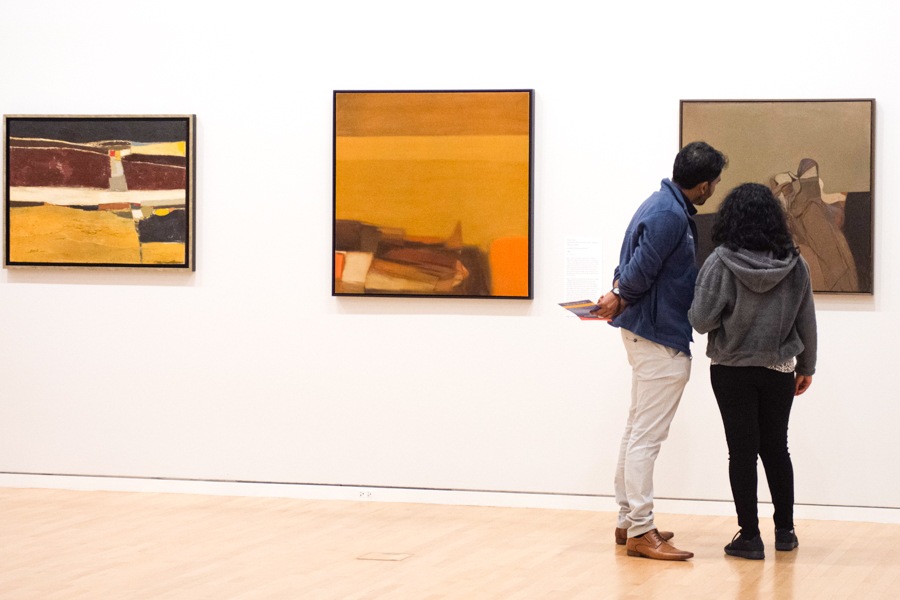Block Museum exhibition ‘Taking Shape: Abstraction from the Arab World’ redefines modernism
Esther Lim/The Daily Northwestern
“Taking Shape: Abstraction from the Arab World” is the Block Museum of Art’s latest exhibition. It is open until Dec. 4.
October 2, 2022
Two and a half years after its originally scheduled inauguration in spring 2020, “Taking Shape: Abstraction from the Arab World, 1950s–1980s” has arrived at the Block Museum of Art. Students, faculty and community members gathered Wednesday evening to welcome the exhibit to Northwestern.
“This exhibition brings to light the works of artists who have been overlooked, or until recently, written out of dominant narratives about history,” Corinne Granof, an in-house curator of the exhibition, said at the event.
“Taking Shape” displays almost 90 paintings, sculptures, drawings and prints by artists from North Africa, West Asia and the Arab diaspora, redefining 20th century modernism. The works are drawn from the collection of the Barjeel Art Foundation in Sharjah, United Arab Emirates. The featured artists are from countries including Algeria, Egypt, Iraq and Jordan.
The time period of the showcased art was pivotal for countries in North Africa and West Asia. During the mid- to late- 20th century, several countries in the regions gained their independence and developed their identities as nation-states. Many artists at the time found inspiration in personally exploring those changes, according to art, theory, practice Prof. Caroline Kent.
“Whenever a colonial power is removed, there’s also this space individuals are making to redefine themselves and find themselves,” Kent said.
In contrast to traditional figuration, abstraction utilizes line, color and texture in a more unconventional manner. The technique expresses a wide range of critical viewpoints, political commentaries and individual perspectives.
Artists from the Arab world added to predefined conceptions of abstract art in their inclusion of elements inspired by Arabic geometry and spatiality, Islamic decorative patterns and spiritual practices such as those of Sufism, a mystical Islamic belief. Many of the works include Arabic calligraphy, combining visual and literary art.
“We often think of modernism in literature as happening in parallel to modernism in visual arts, but in fact, that’s a single conversation,” English Prof. Rebecca Johnson, director of the Middle East and North African Studies Program, said of works that include lines of text. “The relationship between the text and the image are actually inseparable … One is a tool for understanding the other.”
While the exhibition’s works acknowledge the cultural elements of the Arab world, how viewers perceive them is another facet, according to art, theory, practice Prof. Michael Rakowitz.
“We talk about calligraphy being beautiful, but it’s also quotidian,” Rakowitz said. “What are the dangers of exoticizing it, to the point it’s fetishized?”
All nuances aside, each of the collection’s pieces showcases abstract art in the Arab world and its cultural, linguistic, ethnic and religious diversity.
The collection will remain on display at the Block until Dec. 4. NU is the collection’s final stop after previously being displayed at New York University, Boston College, the Tampa Museum of Art and Cornell University.
“This show is important because it dispels a lot of notions and stereotypes about my region,” Sultan Sooud Al Qassemi, founder of the Barjeel Art Foundation, said. “It shows a time where people of different faiths and different cultures can come together.”
Email: divyabhardwaj2025@u.northwestern.edu
Related Stories:
—The Block Museum’s ‘Looking 101’ exhibit helps visitors practice analyzing artwork



